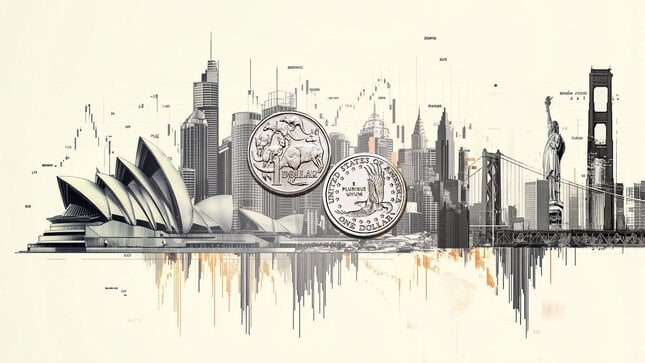Prices of gold have magnified significantly throughout the years, with industrial demand and production being among the factors influencing the price of the world’s most popular precious commodity. However, as with any commodity, speculating its price is not an easy process. So it is important to know the main factors that drive the price of the world’s favorite precious metal.
Industrial Demand. Gold is an extremely valued and desired commodity. Apart from being a precious metal, approximately half of the world’s demand for gold is used for jewelry. Another large percentage of the demand for gold is used for technological and industrial purposes.
Therefore, the price of gold can be driven by the simple theory of supply and demand. As the cost of the desired commodity can increase as the demand for consumer items such as jewelry and electronics rises.
Gold as a “safe haven”. During harsh times of economic recession and uncertainty, many investors invest in gold due to its everlasting value. The precious metal is usually regarded as a “safe haven” for investors during uncertain times. When the price of bonds, equities, and real estate drops, the interest in gold investing can rise, fueling its price. Gold can be used as a valuable asset to reduce risk against economic events such as inflation or currency devaluation. Additionally, gold is also regarded as a provider of protection during times of political instability.
Production. Mining gold is an expensive procedure due to gold being a rare commodity and therefore precious. Since 2012, there haven’t been any significant discoveries on new gold deposits, therefore minors now have to dig deeper to find more quality gold reserves. This more challenging endeavor causes more issues: miners being exposed to more hazards as well as the environmental impact deepening. In other words, it is more costly to extract less gold. These factors increase the costs of mine production, which can result in higher gold prices.
Central Banks. Central banks lean towards keeping paper currencies and gold in monetary reserves. Monetary reserves are the holdings of banknotes and other reserved valuables such as gold which are held by monetary authorities such as central banks that are available mainly to balance payments of the country.
As for the price of gold, it usually rises when central banks diversify their monetary reserves away from the paper currencies they’ve accumulated and into gold. Many nations from around the world hold reserves such as these that mainly consist of gold.
The value of the US Dollar. Since gold is a dollar-entitled precious metal, its cost per ounce is immediately influenced by the value of the United States dollar. So, a stronger US dollar tends to keep the price of gold lower, and vice versa-when the value of the US dollar drops it's likely to cause the price of gold to increase.
Investors prefer to wait until the dollar is weaker before purchasing gold, this is due to investors wanting more gold for their buck. As the demand for the valued commodity rises, so does its price.
Inflation. Inflation or the increasing price of goods and services is another factor that can influence the price of gold. Rising levels of inflation tend to drive the prices of gold higher, on the other hand, decreasing levels of inflation cause the prices of gold to drop.
Inflation is mostly a sign of economic prosperity. When the economy is thriving, it’s customary for the Federal Reserve to expand the supply of funds. Expanding the supply of funds weakens the value of each existing banknote in circulation, making it more costly to acquire assets that are considered valuable, such as gold.
ETFs. ETFs have become a very popular and valuable investment vehicle, where investors can buy and sell assets such as gold through a brokerage firm on the stock exchange. Within ETFs, gold is a favored commodity where it is bought and sold just like shares. As of now, ETFs signify a valuable share of total gold demand per volume, which has a major impact on its per-ounce cost.
By being aware of these factors, speculations can be made regarding the direction the precious metal will be going in the future. This helps investors make better-informed decisions regarding the best time to buy and sell the precious commodity.
Trading is risky. Information presented herein is not to be construed as a solicitation or an offer to buy or sell any Financial Instrument or to participate in any trading strategy. We also offer CFD products. 72.13% of retail CFD accounts lose money. CFDs trading is risky and your entire capital might be at risk. Information presented herein is not to be construed as a solicitation or an offer to buy or sell any Financial Instrument or to participate in any trading strategy.
Editors’ Picks

Gold Price Annual Forecast: 2026 could see new record-highs but a 2025-like rally is unlikely Premium
Gold hit multiple new record highs throughout 2025. Trade-war fears, geopolitical instability and monetary easing in major economies were the main drivers behind Gold’s rally.

AUD/USD Price Annual Forecast: Is 2026 the year the Aussie breaks above 0.70? Premium
In a context where AUD/USD rate differentials, institutional credibility, and geopolitical dynamics are once again central, 2026 could mark a new phase in the balance of power between the Australian Dollar and the US Dollar.

USD/INR Price Annual Forecast: Indian Rupee could disappoint both optimists and pessimists alike in 2026 Premium
The Indian Rupee (INR) has seen a consistent depreciation against the US Dollar (USD) for the last several years and turned out to be the worst-performing Asian currency in 2025.

Top 10 crypto predictions for 2026: Institutional demand and big banks could lift Bitcoin
Bitcoin’s (BTC) adoption story is unraveling and the king crypto could see institutional demand return in 2026. Crypto asset managers like Grayscale are betting on Bitcoin’s rally to a new all-time high next year, and themes like Bitcoin as a reserve asset are emerging.

S&P 500 Price Annual Forecast: 2026 to benefit from decent growth as Trump runs it hot Premium
BlackRock, the world's largest asset manager, ran an online survey in early December asking respondents whether attractive returns for risk assets would continue for a fourth straight year in 2026.
RECOMMENDED LESSONS
Making money in forex is easy if you know how the bankers trade!
I’m often mystified in my educational forex articles why so many traders struggle to make consistent money out of forex trading. The answer has more to do with what they don’t know than what they do know. After working in investment banks for 20 years many of which were as a Chief trader its second knowledge how to extract cash out of the market.
5 Forex News Events You Need To Know
In the fast moving world of currency markets where huge moves can seemingly come from nowhere, it is extremely important for new traders to learn about the various economic indicators and forex news events and releases that shape the markets. Indeed, quickly getting a handle on which data to look out for, what it means, and how to trade it can see new traders quickly become far more profitable and sets up the road to long term success.
Top 10 Chart Patterns Every Trader Should Know
Chart patterns are one of the most effective trading tools for a trader. They are pure price-action, and form on the basis of underlying buying and selling pressure. Chart patterns have a proven track-record, and traders use them to identify continuation or reversal signals, to open positions and identify price targets.
7 Ways to Avoid Forex Scams
The forex industry is recently seeing more and more scams. Here are 7 ways to avoid losing your money in such scams: Forex scams are becoming frequent. Michael Greenberg reports on luxurious expenses, including a submarine bought from the money taken from forex traders. Here’s another report of a forex fraud. So, how can we avoid falling in such forex scams?
What Are the 10 Fatal Mistakes Traders Make
Trading is exciting. Trading is hard. Trading is extremely hard. Some say that it takes more than 10,000 hours to master. Others believe that trading is the way to quick riches. They might be both wrong. What is important to know that no matter how experienced you are, mistakes will be part of the trading process.
The challenge: Timing the market and trader psychology
Successful trading often comes down to timing – entering and exiting trades at the right moments. Yet timing the market is notoriously difficult, largely because human psychology can derail even the best plans. Two powerful emotions in particular – fear and greed – tend to drive trading decisions off course.


